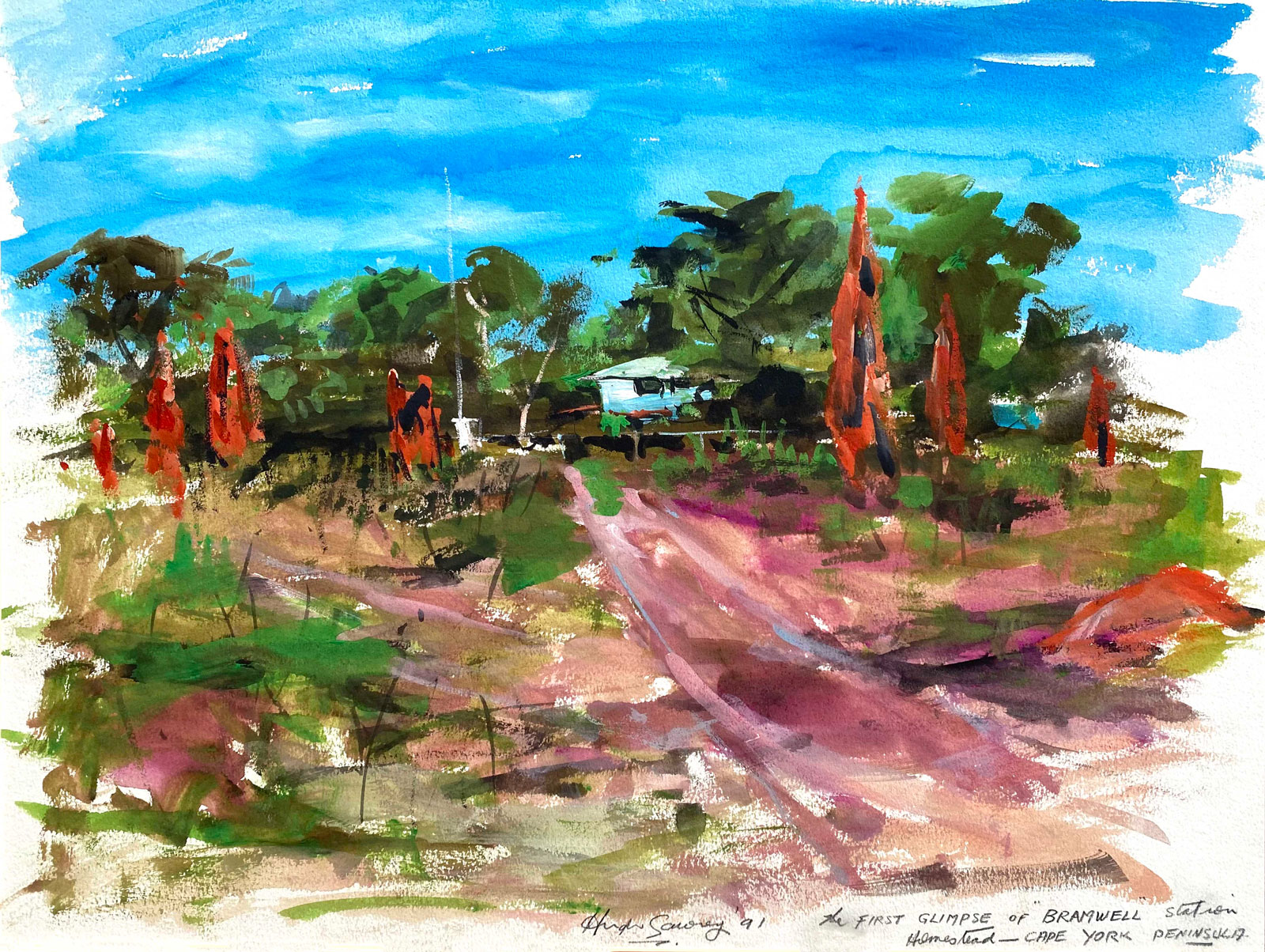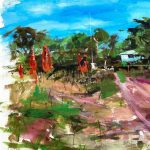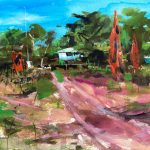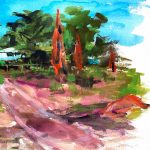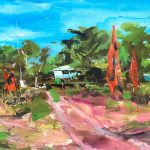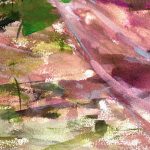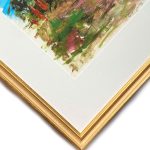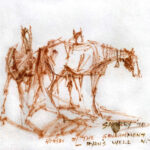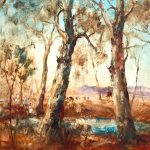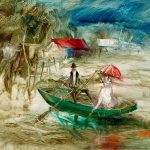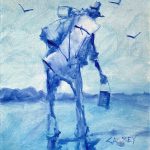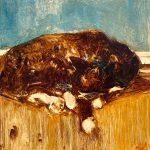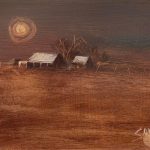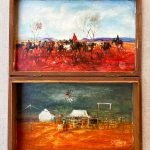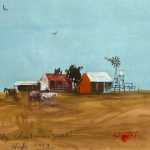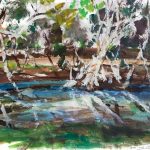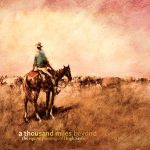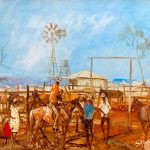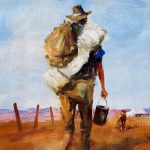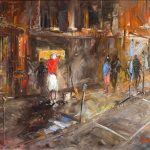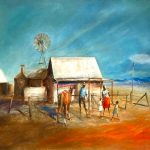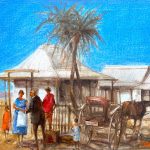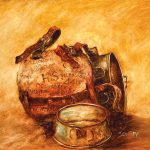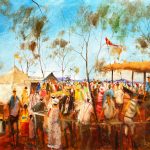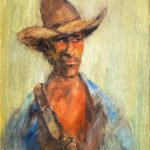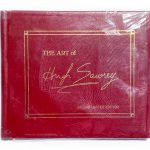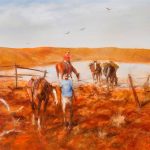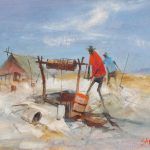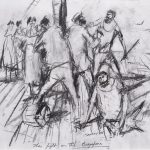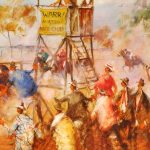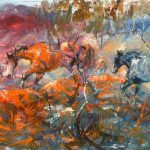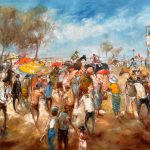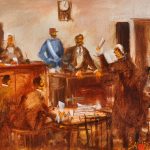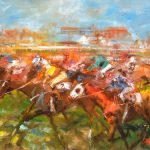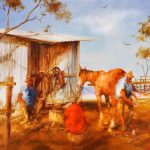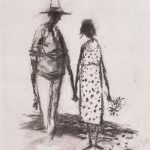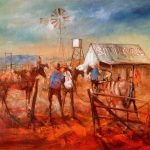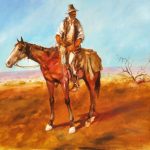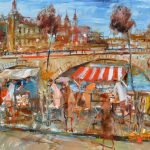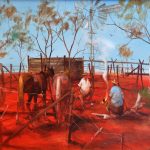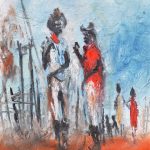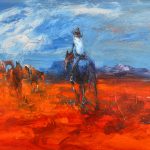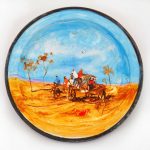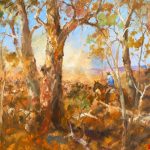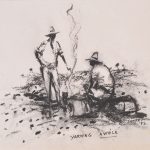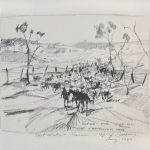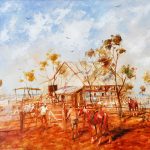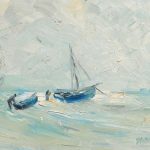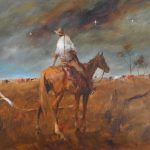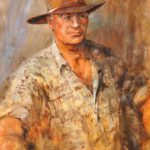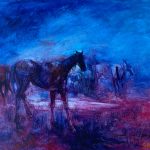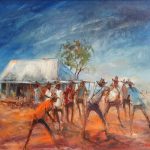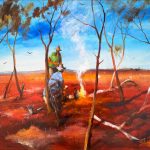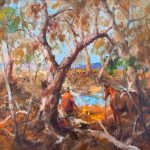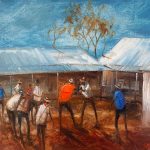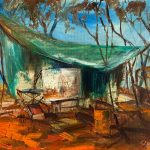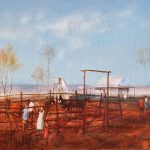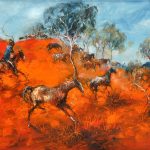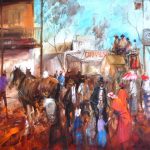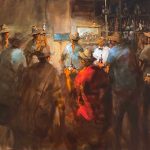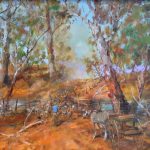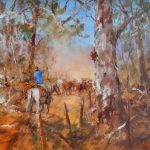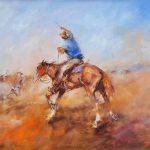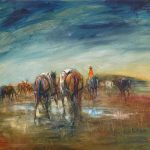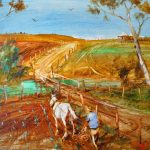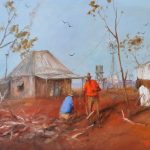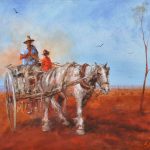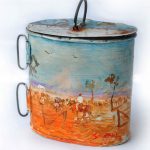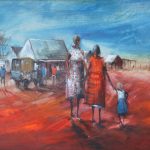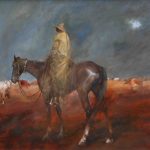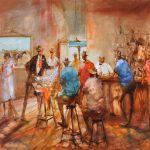The First Glimpse of Bramwell Station (1991) – Sawrey Family Collection – SOLD
Detail photos for this Artwork
This colourful painting by Hugh Sawrey was created in 1991 and has its origins in a unique collaboration between Sawrey and the Brisbane “Courier Mail” journalist, the late Lawrie Kavanagh. Sawrey and Kavanagh made a number of trips together through Queensland that took them from one end of the state to the other, from east to west and into remote areas, visiting places that Sawrey had travelled through years before as a stockman.
Along the way, Lawrie wrote the stories from the communities they travelled through, and Sawrey illustrated the tales with drawings and paintings, preserving local history.
Many of the stories were published in Kavanagh’s regular “Courier Mail” weekend column accompanied by Sawrey’s illustrations, several of which also appeared in their book“Outback”, published by the University of Queensland Press in 1993.
Sawrey’s artworks inspired and made during these trips, are reminiscent of his earliest sketches on scraps of paper he carried in his saddle bag years before when he moved on horseback from camp to camp during his droving days.
These wonderful artworks from the Kavanagh days rarely surface for sale. Over the years, being a specialist in Hugh Sawrey’s work, I’ve had the pleasure of selling a small selection of them. I’m now delighted to offer one of these pieces, “The First Glimpse of Bramwell Station”, which has been held in the Sawrey family’s private collection for 32 years.
In this painting Hugh Sawrey depicts the road into Bramwell Station, and the distinctiv large red ant hills (termite mounds) that lined the entry to the station when he and Kavanagh visited Bramwell on their 1991 tour to the Cape York Peninsula.
Bramwell Station is the most northerly cattle station in Australia, located two hours north of Weipa, Despite its remoteness, it is now one of the best-known and most important historic and tourist sites in the Cape York Peninsula.
Sawrey portrays the rich colours of Bramwell’s location in the far north of Queensland, conveying the red earth, the striking colour and impressive size and sculptural beauty of the anthills, and the bright blue sky.
On page 133 of “Outback”, Lawrie Kavanagh recounted his fascination for the termite mounds he encountered on his journey to the Cape with Sawrey, and in particular, his first glimpse of the station homestead at Bramwell:
“So far, the only person I know with termite mounds in his front yard is pioneering cattleman,
Rod Heinemann, right up on the Cape at Bramwell Station. When Rod took up Bramwell in the
forties, he decided the giant red ant hills out the front of his homestead looked so good he
left them there instead of knocking them down for a tennis court, as was the custom.
Today those giant red spires are an inspiring sight at dawn and dusk,
standing guard over Bramwell homestead …”.
Rod and Theresa Heinemann, were the owners of Bramwell when Sawrey and Kavanagh visited in 1991. In earlier days when Sawrey worked in the area, stations in Cape York, including Bramwell, relied solely on cattle for income, and would send their stock south with droving teams. Rod Heinemann was one of the regular drovers, mostly to the Mareeba yards, but poor seasons, the remoteness of the station, freight costs, and a slump in cattle prices in the 1970’s and 1980’s made cattle sales financially difficult.
The Heinemann family – some of whom are buried at the homestead’s graveyard site – initiated tourism on Bramwell in the 1980s, welcoming adventurous visitors to the homestead. Successive owners and lease holders have developed Bramwell Station and the nearby Junction Roadhouse into integral, iconic and much-loved stops for visitors to the Cape, being located near the start of the famous four-wheel-driving challenge, the Old Telegraph Track.

